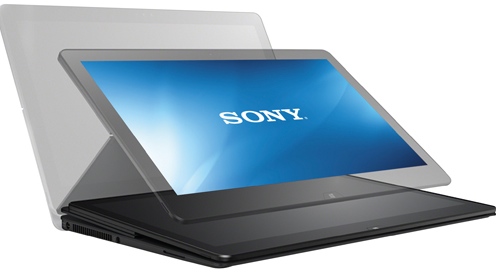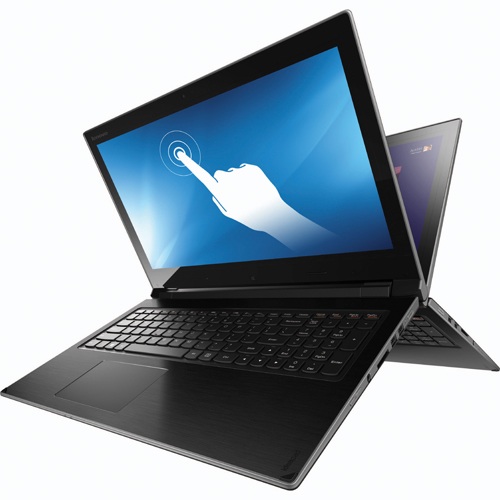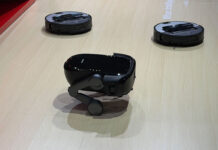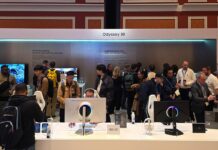 When it comes to cars, a convertible is one with a roof that protects occupants from the weather while offering a top-free ride in the summer sunshine. When it comes to PCs, convertible laptops mean something a little different. These are PCs that combine the best of two different experiences —the laptop and the tablet— in a single device. And like a convertible (the car), a convertible laptop accomplishes this trick through some clever hardware design. Convertible laptops aren’t for everyone, but if you’re a fan of mobile computing and you’d love to have a tablet along for the ride without the extra weight (and expense); or if you wish your tablet had a keyboard and trackpad, a convertible laptop may be the ideal device for you.
When it comes to cars, a convertible is one with a roof that protects occupants from the weather while offering a top-free ride in the summer sunshine. When it comes to PCs, convertible laptops mean something a little different. These are PCs that combine the best of two different experiences —the laptop and the tablet— in a single device. And like a convertible (the car), a convertible laptop accomplishes this trick through some clever hardware design. Convertible laptops aren’t for everyone, but if you’re a fan of mobile computing and you’d love to have a tablet along for the ride without the extra weight (and expense); or if you wish your tablet had a keyboard and trackpad, a convertible laptop may be the ideal device for you.
Convertible laptops broke into the mainstream with the release of Microsoft’s Windows 8 operating system. Prior to that, tablets ran Android or Apple’s iOS, while most PCs ran Windows. Even though there was demand for some sort of combined device, having two operating systems and two different CPU architectures made mashing the two devices together too tough. So most people carried both a PC and a tablet, or they equipped their tablet with a separate Bluetooth keyboard and mouse.
With Windows 8, suddenly there was a single operating system that could power both tablets and laptops. It was a fully featured Windows OS, ran all the Windows software, but also offered tablet-friendly touchscreen capability.
Now the problem was purely one of hardware design. PC manufacturers quickly got to work on it and soon there were dozens of convertible laptops on the market (Best Buy carries a large selection of these). Some solve the “convertible” issue with a detachable keyboard so the display becomes a standalone tablet, some have a sliding display, while others have the display mounted on a pivoting hinge. Some let you flip the display to face backward, perfect for presentations.
The Sony Vaio Tap 15A I reviewed in January is a good example of a pivoting-style display mechanism. I’ve included a video I shot of this convertible doing its thing below:
The downsides to a convertible laptop are the potentially delicate mechanisms some use to accomplish the switch from tablet to laptop and what is often an imperfect tablet experience. By imperfect, I mean that instead of the flat slab of metal and glass you get with a standalone tablet, the tablet face of a convertible laptop is likely to be thicker, heavier and its case form may be a little irregular. The tablet will still work perfectly, but the mechanics of the PC do require a few compromises in form factor.
 But for many people, the positives of a convertible laptop far outweigh those compromises. It’s particularly useful for people who travel and value saved space and weight —sales persons, for example.
But for many people, the positives of a convertible laptop far outweigh those compromises. It’s particularly useful for people who travel and value saved space and weight —sales persons, for example.
A convertible laptop is likely to be considerably less expensive than buying both a laptop and a tablet. It’s not much larger than many Ultrabooks either, so you still have portability. The keyboard usually offers a better quality experience than the third party Bluetooth keyboards you can use with a tablet, and includes a trackpad as well for full productivity. Because it’s a laptop and has more room in its case than a tablet, you’ll typically find a lot more storage space than on a tablet. There will also be a full range of accessory and connectivity ports like USB 3.0.
In other words, with a convertible laptop, you have the full Windows PC experience as well as the full Windows 8 tablet experience in a single device. Because there’s so much variation in how manufacturers accomplish the change from laptop to PC, I’d suggest browsing in store to get a feel for the different convertible laptops before making a choice.



